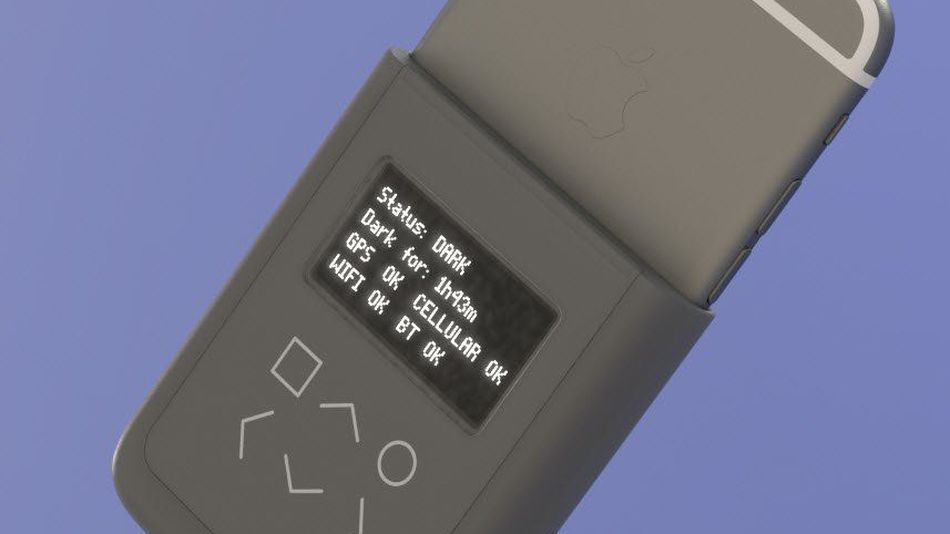When Edward Snowden met with reporters in a Hong Kong hotel room to reveal NSA secrets, he famously asked them to put their phones in the fridge to block any radio signals that might be used to secretly activate the devices microphones or cameras.
It’s fitting then that 3 years later he has returned to the smartphone surveillance problem with an elegant solution, that’s far more portable than a hotel mini-bar.
On Thursday the MIT Media Lab, Snowden with the aid of renowned hacker Andrew ‘Bunny’ Huang released designs for a phone case like device that wires into your iPhone’s processes to monitor electrical signals sent to its internal antennas. The aim? To offer a constant check on whether your phones radios are transmitting. Claiming it is much more trustworthy than turning the antennas off by utilizing “airplane mode”, which has been demonstrated can be easily hacked.
Snowden and Huang hope to offer strong privacy guarantee to smartphone users who need to shield themselves from government-funded agency’s that have access to advanced hacking and surveillance capability’s. Particularly highlighting reporters trying to carry their devices into hostile foreign countries without revealing their locations.
“One good journalist in the right place at the right time can change history,” Snowden told the MIT Media Lab crowd via video stream. “This makes them a target, and increasingly tools of their trade are being used against them.”

The solution is comprised of a modified iPhone 6 that they describe as an introspection engine. The add on appears to be little more than a stylish battery case, with a mono-color screen. However, it can be described as a miniature form fitting oscilloscope: wires from the external device dive into the iPhones hardware through its SIM-card slot to attach test points on the phones circuit board. With the Sim card housed in the case to allow access to the internal systems.
The modified phone would notify the user with a notification and perhaps even an audible alarm if its systems detect any radio signals or other activities when they are meant to be off. There is even the possibility of including a kill switch, automatically turning the phone off if any activity was reported.
“Our approach is: state-level adversaries are powerful, assume the phone is compromised,” Huang says. “Let’s look at hardware-related signals that are extremely difficult to fake. We want to give a you-bet-your-life assurance that the phone actually has its radios off when it says it does.”
Modern life has largely accepted that privacy is quickly becoming a luxury of the past, but it might not have to be. Snowden hopes that with his device enough high profile people will realize they are being monitored and make a big enough case to effectively challenge the powers that be.
While there is not yet a prototype, simply a design. Snowden claims that manufacturing would be easy with the resources he has in China and Russia. To speed his goal, he has also made all the code and designs open source to allow anyone with the DIY capabilities to secure themselves against government spying.
Even with the designs being open source, it is unlikely the government can do anything to stop this product. It’s impossible to stop the device from reading the hardware, and therefore making it impossible to stop the ability of the device to monitor the activity.

 When Edward Snowden met with reporters in a Hong Kong hotel room to reveal NSA secrets, he famously asked them to put their phones in the fridge to block any radio signals that might be used to secretly activate the devices microphones or cameras.
When Edward Snowden met with reporters in a Hong Kong hotel room to reveal NSA secrets, he famously asked them to put their phones in the fridge to block any radio signals that might be used to secretly activate the devices microphones or cameras.